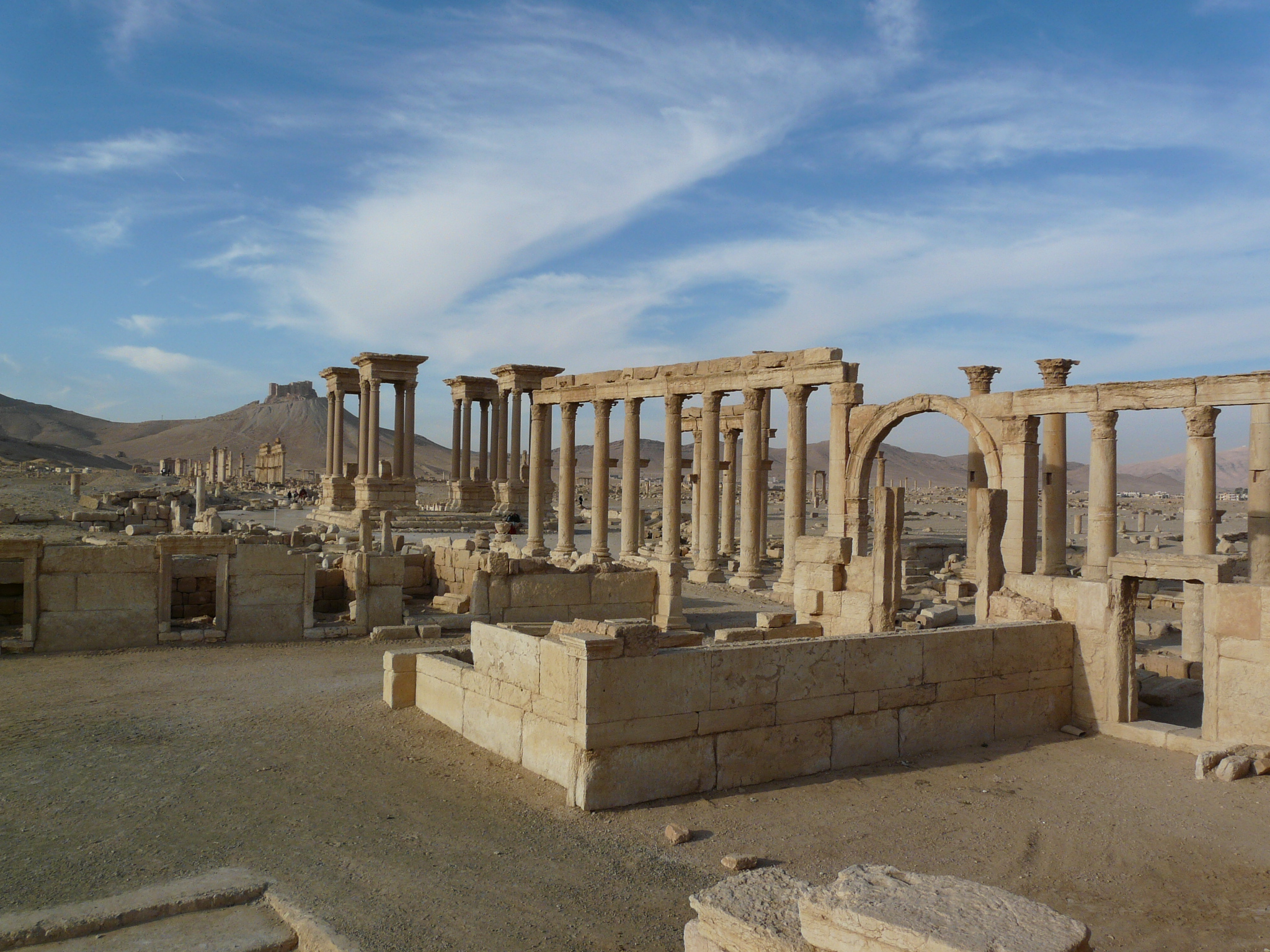Mere months from now, Palmyra, a wonder of the world’s ancient sites and among its best preserved for 1,500 years, may be completely obliterated. Islamic State militants have relentlessly looted and blown up Syrian and Iraqi sites of antiquity over the past year, claiming to thwart promotions of idolatry. It goes without saying that virtually no one in the contemporary world holds Palmyra dear for the purposes of pagan practice. Today, as throughout its past, Palmyra carries layered, multifaceted and often contradictory meanings for diverse people. ISIL’s nihilistic intolerance of difference attacks not just these various narratives, but also their interaction and coexistence with each other: that is to say, the very essence of historical memory.
When Palmyra blossomed as a center of trade in the first and second century Roman world, its residents fused Greco-Roman culture with local traditions and were noted for their tolerance toward diverse faiths and ethnic groups. According to Stephennie Mulder, associate professor of Islamic art and architecture at the University of Texas at Austin: “Palmyra stood for […] a cosmopolitan culture that celebrated difference.” The city rebelled against Rome under the third century warrior queen Zenobia, who led her army into Egypt and conquered almost a third of the Roman Empire. She lost Palmyra to Emperor Aurelian and was taken hostage to Rome in 271, but remained a hero in the Arab tradition. Arab writers later cast her as a proto-Arab precursor of the Muslim conquests that began in the seventh century. And just before ISIL burst into Syria’s civil war, local rebels declared themselves “Grandchildren of Zenobia.” Past Muslim conquerors repurposed parts of Palmyra to suit their religion: the temple of Bel even functioned as a mosque during the Umayyad caliphate. Clearly, though, ISIL has no desire to incorporate the past of occupied territory into its own history. Instead, the group’s outright attack on sites that have been respected for millennia serves to ravage history altogether. Columbia University professor Rashid Khalidi called the militants “postmodern authoritarians.”
Palmyra has fascinated the Western imagination since Francois de Volney’s “The Ruins, or Meditations on the Revolutions of Empires” (1791). Since then, travellers, archaeologists, and historians have extolled its beauty and wealth of historical insights. It has inspired poetry, such as Thomas Love Peacock’s “Palmyra” (1806). Nineteenth century Europeans drew heavily from its architectural influence, as did the designers of neoclassical architecture in Washington, D.C. British archaeologist and poet Gertrude Bell wrote in 1910: “I wonder if the wide world presents a more singular landscape.” Such admiration continues in the present day. Until war broke out in 2011, thousands of visitors from Europe, the United States and other parts of the Middle East flocked to Palmyra every year.
But Western cries of outrage over the loss of sites like Palmyra provoke the anger of many Syrian activists. In the words of one anonymous activist: “I don’t understand why the whole world feels sorry for the destruction of a couple of statues and not for the people who are being killed every day.” Since the conflict began, over 240,000 people have been killed and more than 4 million forced to flee, creating a refugee crisis throughout the Middle East and Europe. In this context of enormous human loss and devastation, is it unethical to grieve over Palmyra?
Those of us who follow the war from a safe distance are inclined to feel we personally lose something when such sites are destroyed. We have incorporated these places into notions of our own history; we call Palmyra a “World Heritage Site,” because supposedly we, too, inherited it from the ancient world. Certainly elements in our architecture, literature, and popular imagination bear its mark. But for locals whose families have been divided, displaced and murdered, the demolition of antiquities is a profound component of ISIL’s terror. In Iraq and Syria, violence against the existence of the past amplifies violence against the existence of the present. People whose lives disintegrate into chaos cannot turn to their homeland’s cultural icons, representing the grounding narratives of their history. This is a total annihilation of identity. Hélène Sader, an archaeologist at the American University of Beirut, said: “You throw the people out, erase their history, and you can claim they were never there.”
The publicity motive behind Palmyra’s wreckage also throws international coverage of the atrocity into question. Videos of exploding temples are easier for many to watch than those of executions, and the group carefully crafts its footage to magnetize widespread attention. In this sense, media outrage might inadvertently serve ISIL’s purposes. Yet the alternative is intolerable. Silence constitutes complicity in ISIL’s erasure of the past, its threat to the future and its claim to a singular and interminable present.
It has never been possible for humanity to objectively understand its past. None of us can claim to uncover the precise truth of it without subconsciously inserting our present biases and assumptions. History is not a recreation of the past, but an interpretation of it. Interpretation is defined by its coexistence with other, different interpretations; it signifies the telling of one’s own story, and the propensity of meanings to evolve, interact and draw from each other. This is the supremely sacred human capacity that ISIL seeks to destroy: this is historical memory.
